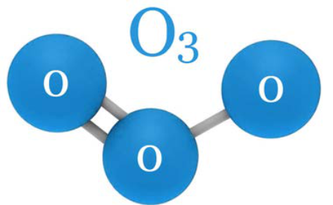Ozone: What Can it Do for Your Water?
The History of Ozone
Ozone gained popularity in water treatment in the 1970s with the discovery of potentially harmful chlorine disinfection by-products (DPBs). Later, ozone was also found to be more effective against generally chlorine-resistant protozoan pathogens, such as Cryptosporidium. Although not able to maintain a residual during storage and distribution, ozone was useful for the removal of organic and inorganic matter, pesticides, taste and odor components, and other water pollutants. When used as a precursor to chlorine, less chlorine disinfectant is needed.
Ozone Applications
Ozone disinfection applications have been instrumental in preventing waterborne outbreaks due to drinking and recreational water exposures. Although not a new technology, the benefits of such advanced oxidation practices to destroy microbial pathogens and other contaminants are being increasingly realized. Given the changing practices of waste management and water reuse, and the continued emergence of pathogens resistant to conventional chlorine disinfectants, ozone is gaining renewed popularity in food and water treatment industries.
Ozone gained popularity in water treatment in the 1970s with the discovery of potentially harmful chlorine disinfection by-products (DPBs). Later, ozone was also found to be more effective against generally chlorine-resistant protozoan pathogens, such as Cryptosporidium. Although not able to maintain a residual during storage and distribution, ozone was useful for the removal of organic and inorganic matter, pesticides, taste and odor components, and other water pollutants. When used as a precursor to chlorine, less chlorine disinfectant is needed.
Ozone Applications
Ozone disinfection applications have been instrumental in preventing waterborne outbreaks due to drinking and recreational water exposures. Although not a new technology, the benefits of such advanced oxidation practices to destroy microbial pathogens and other contaminants are being increasingly realized. Given the changing practices of waste management and water reuse, and the continued emergence of pathogens resistant to conventional chlorine disinfectants, ozone is gaining renewed popularity in food and water treatment industries.
|
Benefits
|
Limitations
|




